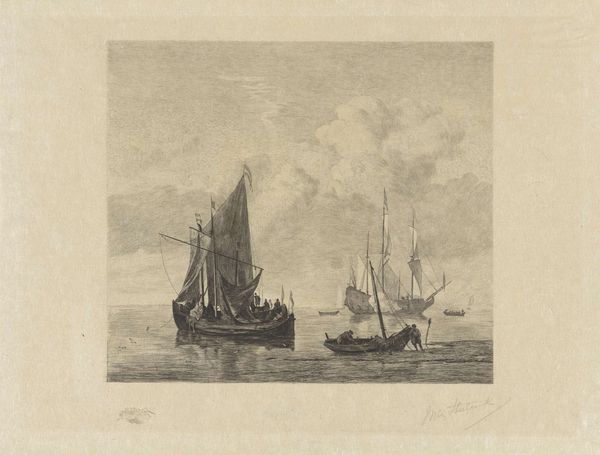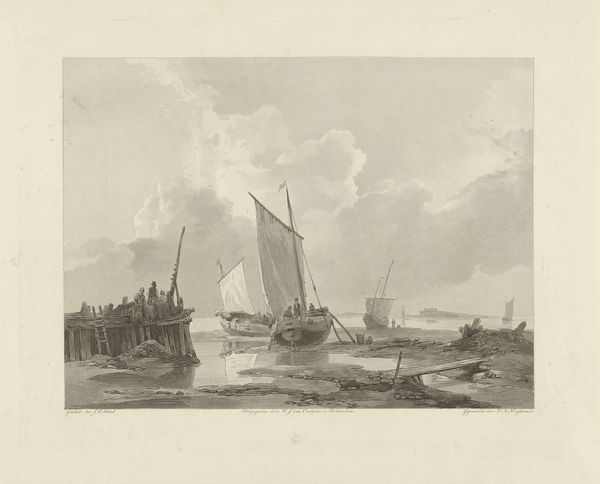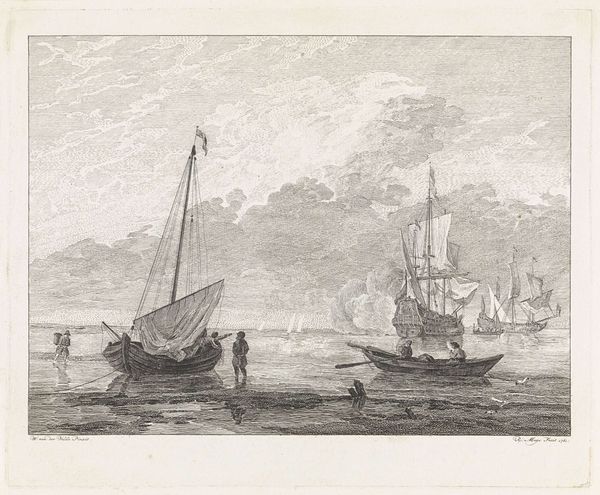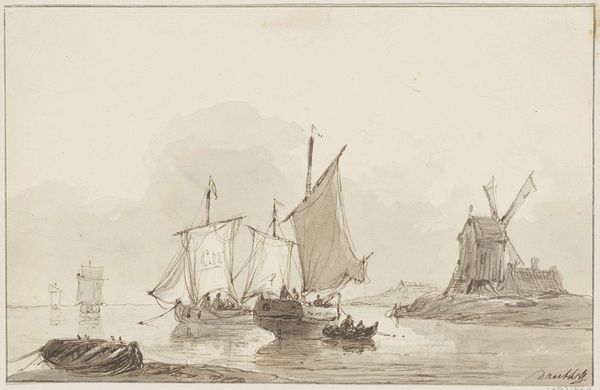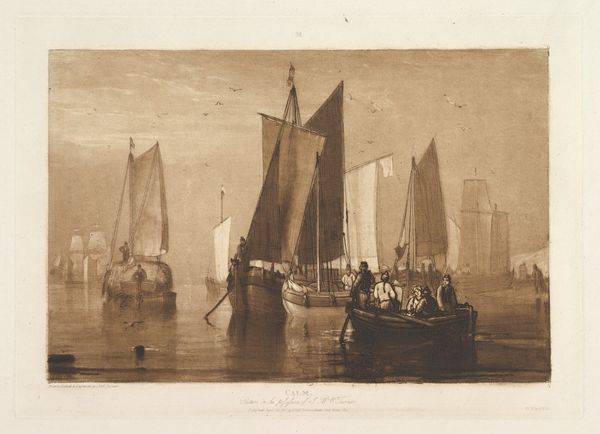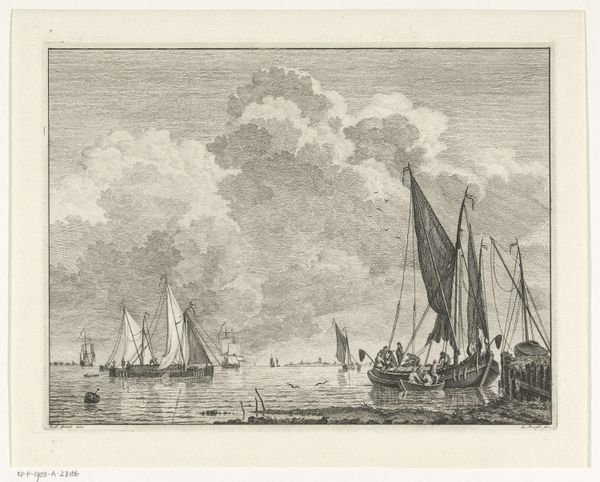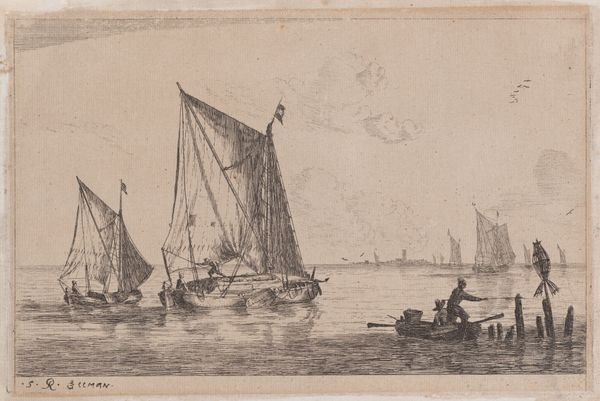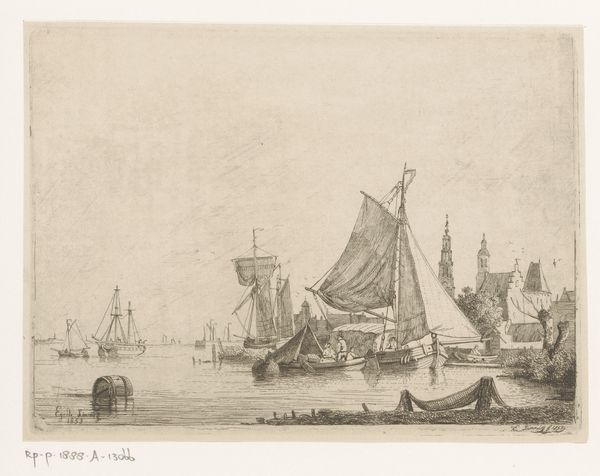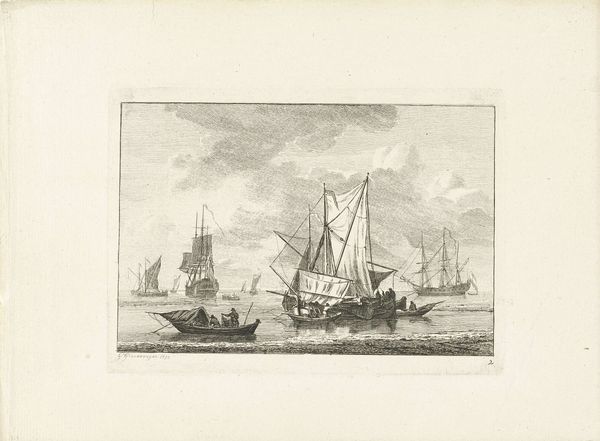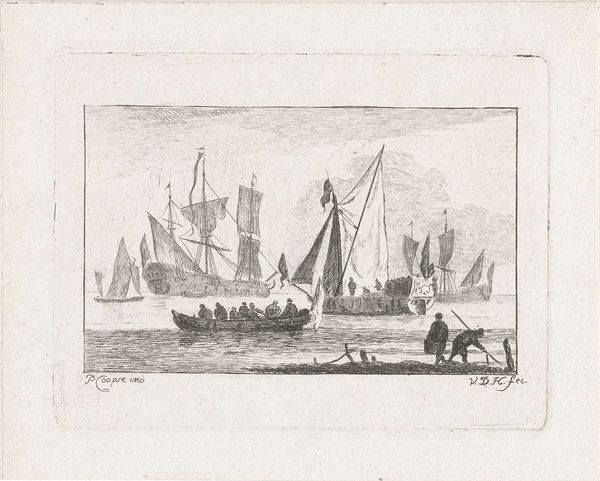
print, etching
#
dutch-golden-age
# print
#
etching
#
landscape
#
line
#
genre-painting
#
realism
Dimensions: height 259 mm, width 350 mm
Copyright: Rijks Museum: Open Domain
Editor: So, this is "Maasgezicht bij Dordrecht" by Willem Steelink, made between 1888 and 1891. It's an etching, so a print. I'm immediately struck by how incredibly detailed it is for such a small scale. All those little boats! What do you make of it? Curator: Initially, I observe a complex interplay of light and shadow achieved through meticulous linework. Note the strategic use of hatching and cross-hatching. Does this contribute to a sense of depth? How would you describe the composition? Editor: Definitely! The lines create a feeling of busyness, like the water is alive. The boats are clustered, especially toward the back; it feels very dynamic, but also a bit chaotic? Curator: Indeed. Observe the artist's employment of the picture plane. Steelink guides our vision into receding space by modulating linear density. A key structural element here lies within gradations in tone... what is their impact? Editor: The darker areas create focal points, almost like spotlights. So even though there's a lot going on, your eye is drawn to specific areas first. How does the medium - an etching - affect how we perceive it? Curator: As an etching, the physical act of mark-making is foregrounded. This, in turn, underscores the intentionality of the artist’s design, his calculated method of orchestrating values and spatial constructs. Is it possible that the stark graphic quality serves to highlight formal relationships inherent within representational motifs depicted? Editor: I think so, because it almost reduces everything to shapes and lines first. The meaning kind of comes second. I never really thought about it that way before. Thanks! Curator: My pleasure. Engaging through close formal investigation opens us to layers of art production beyond mere thematic analysis. I, too, gained fresh perspectives by scrutinizing the work together with you.
Comments
No comments
Be the first to comment and join the conversation on the ultimate creative platform.
